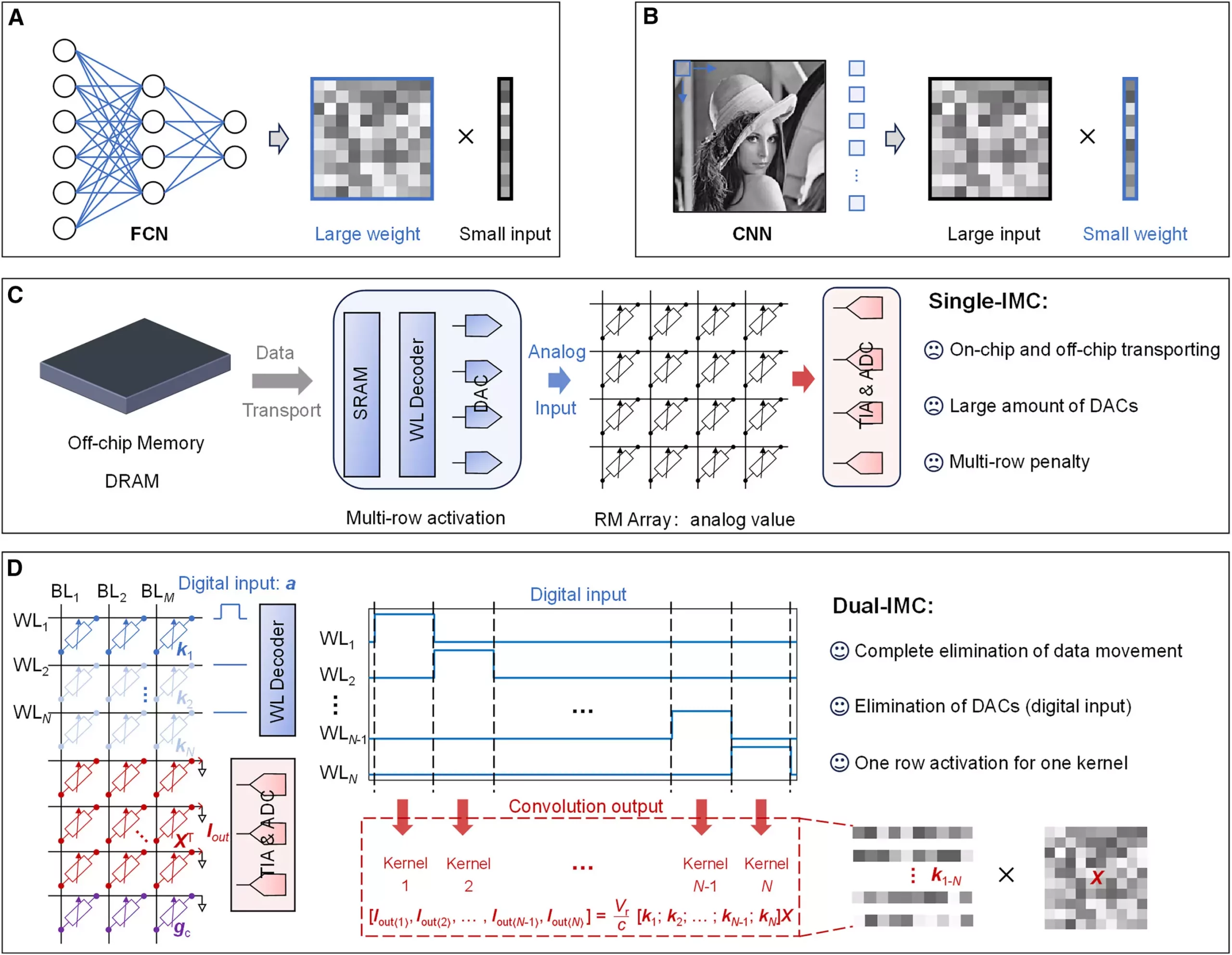Artificial intelligence (AI) has revolutionized industries by enabling complex computations and decision-making tasks. Yet, despite these advancements, significant barriers remain in the realm of data processing. The von Neumann bottleneck—characterized by the limitation posed by the separation of memory and processing units—leaves much to be desired in terms of speed and energy efficiency. As researchers delve into potential solutions, the fundamental question arises: How can we optimize data handling in AI systems to meet the growing demands of contemporary applications?
A group of researchers led by Professor Sun Zhong from Peking University addressed this critical issue in their recent study. Their work highlights a state-of-the-art solution aimed squarely at enhancing the efficiency of AI models, particularly in the context of neural networks, which form the backbone of many AI applications. By analyzing existing architectural frameworks, the team recognized that the bottleneck represented a formidable challenge that needed innovative solutions to unleash the full potential of AI technologies.
Conventional approaches to address the von Neumann bottleneck often utilize what is termed a single in-memory computing (IMC) scheme. In this conventional model, neural network weights are stored within the memory chip while external inputs, such as images and data sets, are loaded separately. This setup, while functional, creates complications, mainly due to the need to shuttle data between on-chip and off-chip systems. The inevitable transitions between the different types of memory can slow down operations and increase power consumption—issues that are increasingly untenable in an era defined by real-time data processing.
To surmount these limitations, the research team proposed a novel dual-IMC scheme. This innovative architecture enables both the neural network weights and inputs to be stored within the same memory array, which allows for processing to occur in a wholly in-memory context. As a result, the researchers observed significant improvements, particularly in the performance metrics associated with matrix-vector multiplication (MVM), a critical operation underpinning many AI neural networks.
The implications of this dual-IMC scheme extend far beyond performance enhancements. Firstly, by facilitating fully in-memory computations, this architecture reduces the time and energy inefficiencies associated with traditional memory configurations. Unlike previous methods, which required transferring data back and forth, the dual-IMC system performs calculations directly within the memory, thereby optimizing processing speeds.
Moreover, eliminating the reliance on digital-to-analog converters (DACs) presents additional advantages. Not only does this reduction lead to decreased circuit footprints, but it also lowers production costs—a particularly appealing prospect for developers aiming to implement more effective AI systems at scale. The dual-IMC architecture essentially transforms the way memory and processing are integrated, setting the stage for a future where AI can advance without being encumbered by conventional limitations.
A meaningful shift in how AI and computing architecture are approached could be on the horizon due to these findings. As contemporary data processing demands continue to grow exponentially, cutting-edge solutions like the dual-IMC scheme can play a pivotal role in reshaping the computational landscape.
In addition to enhancing AI functionalities, the dual-IMC architecture could catalyze breakthroughs in various applications, from image processing to complex signal recovery. By investing in research and development of these advanced systems, there is potential not just for incremental improvements but for transformative progress across numerous sectors—prompting a holistic rethinking of how we utilize AI and machine learning moving forward.
As the field of AI continues to burgeon, solutions such as the dual-IMC scheme offer a compelling illustration of how innovative engineering can address longstanding issues, ultimately paving the way for a more efficient and capable digital future. As we look ahead, embracing such advancements will be crucial in harnessing the true power of artificial intelligence and ensuring that it meets the evolving needs of society.

